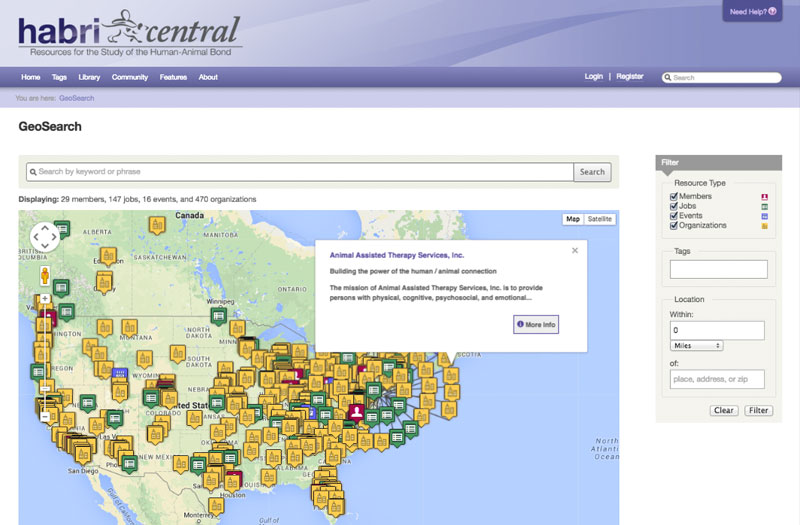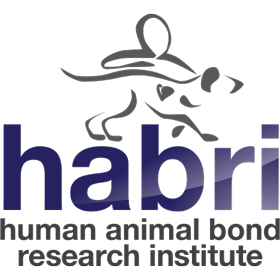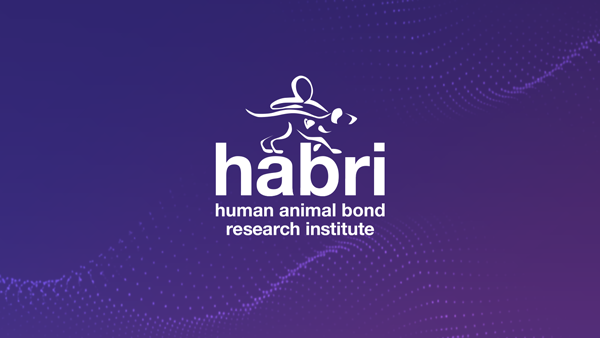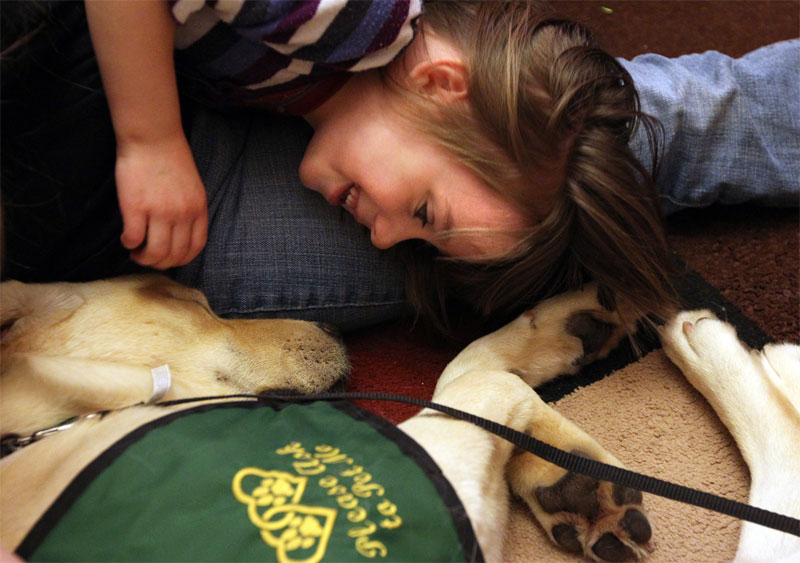HABRI is committed to supporting scientific research to substantiate what many of us know to be true, that humans and pets share a special, mutually-beneficial connection.
People are happier and healthier in the presence of animals. Scientifically-documented benefits of the human-animal bond include decreased blood pressure, reduced anxiety, and enhanced feelings of well-being.
The Science Behind The Human-Animal Bond
Positive human-animal interaction appears to be related to changes in physiological variables both in humans and animals, particularly dogs. HAI has been shown to influence levels of blood pressure, heart rate, hormones correlated with well-being including cortisol, oxytocin, b-endorphin, prolactin, phenylacetic acid and dopamine.
Oxytocin
Oxytocin is a neuropeptide long known to promote maternal care in mammals. The oxytocinergic system has been linked directly to many of the observed psychological effects of human-animal interaction.
- Oxytocin is recognized for its role in bonding, socialization, and stress relief.
- Oxytocin causes many physiological changes, including slowing heart rate and breathing, quiet blood pressure, inhibiting stress hormones, and creating a sense of calm, comfort and focus.
- Studies have demonstrated that human-animal interaction increases oxytocin levels in the brain.[1][2][3]
- The reduction of subjective psychological stress (fear, anxiety) due to animal contact, as well as the dampening of physiological stress parameters in connection with activation of the oxytocinergic system represent a core mechanism in explaining many of the positive effects of HAI.[4]
- Studies have also demonstrated that oxytocin levels are increased in dogs interacting with their own owners versus strangers[5]
Cortisol, Epinephrine and Norepinephrine
Numerous scientific studies have demonstrated the evidence that interaction with a friendly companion animal positively affects endocrine responses as indicated by changes in the levels of cortisol, epinephrine and norepinephrine.[3]
A study on the effects of human-animal interaction on the level of salivary cortisol in shelter dogs found that contact with humans was associated with lower cortisol levels.[7]
Other Hypotheses
The beneficial effect of pet therapy has different possible explanations. According to the affective–emotional mechanism hypothesis, a relaxing human–animal bond acts on adrenal and other corticosteroid hormones inducing a reduction of arterial pressure and cardiorespiratory rates.
The psychological stimulation induced by the presence of an animal and its need for care induces persons to take care of themselves.
The game system theory suggests that playing with an animal can increase defense and augment recovery potentialities; furthermore, an effective, emotional, psychological stimulation is known to solve important psychosomatic problems.[7]
HABRI Central
HABRI Central is an online research hub that houses, classifies and archives research and information on the science of the human-animal bond. The center is maintained by Purdue University under the direction of renowned scholar in human-animal bond studies, Dr. Alan Beck.

Tools like HABRI Central’s GeoSearch allow you connect with human-animal interaction specialists and organizations from all around the globe. Photo: HABRI Central
HABRI Central is the most comprehensive online database for human-animal bond research, with more than 29,000 entries including full-texts of peer-reviewed journal articles, books, white papers, videos, datasets and more.
HABRI Central resources include veterinary medicine, nursing, psychology, sociology, law, academia, policymakers, and philosophy. The center houses and hosts user groups, blogs, expert video segments, newsletters, and more. Scholars from all disciplines are able to connect and share knowledge with others involved in the study of the human-animal bond.
















